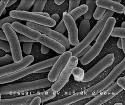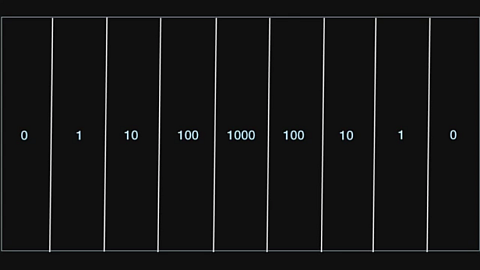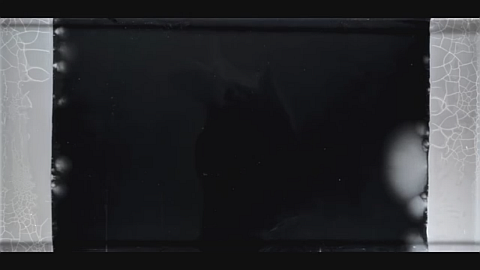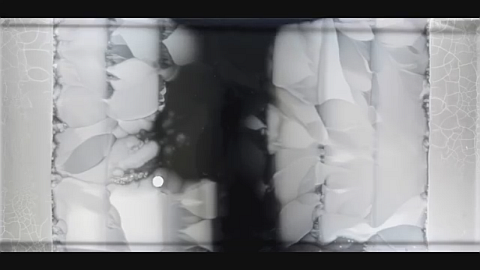Evolution in Action - Visualizing Bacteria Evolving Antibiotic Resistance
This entry is part of a collection on Understanding Evolution. For other entries in this collection, follow that link.
 Not too long ago, I came across a question on Quora, Evolutionary biologists usually say that organisms adapt to their environment. Does this not contradict Darwinism?. It seemed like a good opportunity to explain how natural selection adapts organisms to their environments, and especially to use a recent experiment involving e. coli. Here's what I wrote, with some very minor edits.
Not too long ago, I came across a question on Quora, Evolutionary biologists usually say that organisms adapt to their environment. Does this not contradict Darwinism?. It seemed like a good opportunity to explain how natural selection adapts organisms to their environments, and especially to use a recent experiment involving e. coli. Here's what I wrote, with some very minor edits.
I'm going to assume that by 'Darwinism', you mean natural selection. Organisms adapting to their environments is pretty much textbook natural selection, but let's go through an example to see what this means.
There was a very interesting experiment/demonstration last year involving bacteria and antibiotics. A team of researchers from Harvard Medical School and Technion - Israel Institute of Technology made in effect a giant petri dish - a rectangle 2 ft x 4 ft. The unique aspect of this petri dish, besides its size, was that it was divided into regions with varying concentrations of an antibiotic. Either end of the rectangle was free of antibiotic. The next region in had the minimum concentration to kill the e. coli bacteria that were the subject of the experiment. Each subsequent region moving in increased the concentration ten fold, until the center region, which had a concentration 1000 times higher than what would normally kill e. coli.

So, the researchers seeded the antibiotic free ends with e. coli, and then let them grow, taking periodic photos of the petri dish, and combinging them all into a time lapse movie. I'd really recommend watching the whole thing. It's really very interesting, with more explanation than what I've provided here, and only 2 minutes long.
So, let's take a closer look at one instant to see what exactly is going on. At one point, the tray looked like this:

So, the antibiotic free ends are completely colonized by bacteria. The two regions with the lowest concentration of antibiotic have just begun to be colonized. There are several small resistant colonies, and you can see where each one of those colonies got their starts. What happened was that the original e. coli, with no antibiotic resistance spread across the agar until they hit the antibiotic. Since they weren't resistant, that was as far as they could go without dying. But those e. coli kept on living and reproducing, with mutations appearing throughout the population. In bacteria that just happened to be at the boundary of the antibiotic, who also happened to acquire just the right mutations to make them resistant to the antibiotic, they now had a whole new environment opened up to them and their descendants.
Notice that there's really no pattern to where those colonies got their starts. It was basically random, because mutations are random. No bacteria were trying to evolve. No bacteria were attempting to figure out a strategy to survive the antibiotic. Bacteria don't even have brains to try to do any of that. It was just whatever bacteria happened to be lucky enough to acquire the appropriate mutations by chance, an error at the chemical level when copying DNA.
Once those first resistant bacteria entered this new region, they spread. Then, once they hit the region with 10x the antibiotic concentration, they were contained again, until a few more bacteria happened to acquire the proper mutations by luck, and had a new environment opened up to them and their descendants. This repeated, until the bacteria were eventually colonizing the region with 1000x the concentration of antibiotic that would have killed the original e. coli that seeded the plate:

So, these e. coli were adapting to their environment. However, it wasn't any conscious intent, or Lamarckian type of use and disuse. It was random mutations creating variation in the e. coli populations. Whichever e. coli happened to be lucky enough to have mutations to survive the antibiotic were the ones that thrived. Any e. coli that weren't lucky enough to have those mutations were limited to their existing environments.
This experiment had a pretty strong selection pressure with the antibiotic, but the same principles are at work in nature with other selection pressures. Whatever individuals happen to be lucky enough to acquire by chance the mutations best suited to an environment will be the ones that have the most offspring, increasing the frequency of whatever mutation that benefited them. Multiply this over generations, with natural selection 'ratcheting' additional mutations, so that the population becomes better and better suited to the environment. That is what is meant by saying that organisms adapt to their environment.
More info on the e. coli experiment:
- NPR - Bacteria Invade Antibiotics And Transform Into Superbugs
- Harvard Gazette - A cinematic approach to drug resistance
Image source: Wikimedia Commons
Want to learn more about evolution? Find more at Understanding Evolution.

Comments
lipitor 20mg without prescription order lipitor 80mg for sale order atorvastatin 40mg generic
Posted by: Gzoedy | March 12, 2024 1:39 PM
generic ciprofloxacin - bactrim over the counter buy augmentin 375mg pill
Posted by: Ztktjj | March 14, 2024 12:21 AM
buy cheap cipro - order cephalexin 500mg without prescription order amoxiclav
Posted by: Kbfbsw | March 15, 2024 5:11 AM
oral ciplox - ciprofloxacin 500 mg usa buy generic erythromycin
Posted by: Ypkfmb | March 17, 2024 3:50 AM
buy metronidazole medication - order metronidazole 200mg generic buy zithromax for sale
Posted by: Eiswws | March 18, 2024 1:50 AM
ivermectin 12 mg tablets for humans - cheap aczone oral tetracycline 500mg
Posted by: Muzclr | March 19, 2024 7:44 AM
buy valacyclovir 500mg online - nemasole sale buy zovirax 800mg generic
Posted by: Tpfgea | March 20, 2024 6:58 AM
order generic ampicillin monodox without prescription purchase amoxil generic
Posted by: Liuast | March 21, 2024 9:44 AM
metronidazole without prescription - cefaclor medication purchase zithromax online
Posted by: Ihmebz | March 22, 2024 1:05 AM
buy furosemide 100mg - order warfarin 5mg pills capoten buy online
Posted by: Lqpdta | March 23, 2024 10:47 PM
oral metformin 1000mg - duricef for sale purchase lincocin online cheap
Posted by: Qthuuw | March 25, 2024 4:06 AM
clozaril 50mg pills - buy generic clozapine online famotidine online buy
Posted by: Jrnska | March 27, 2024 1:07 PM
retrovir generic - metformin buy online purchase zyloprim without prescription
Posted by: Dauhea | March 27, 2024 1:37 PM
order clomipramine 25mg for sale - purchase clomipramine without prescription brand doxepin 25mg
Posted by: Ynwxru | March 30, 2024 5:03 AM
brand quetiapine 50mg - buy zoloft sale eskalith order online
Posted by: Bmpkyx | March 30, 2024 9:39 AM
hydroxyzine 25mg price - buy endep generic endep price
Posted by: Izrapw | April 1, 2024 5:04 AM
how to buy augmentin - order augmentin 625mg buy ciprofloxacin 1000mg without prescription
Posted by: Yuhftk | April 3, 2024 7:13 AM
buy amoxil for sale - purchase duricef online cheap buy cipro generic
Posted by: Kmxpqz | April 4, 2024 8:02 PM
buy zithromax medication - order sumycin ciprofloxacin 500 mg brand
Posted by: Oaeqys | April 9, 2024 6:04 AM
cleocin tablet - chloromycetin cheap cheap chloramphenicol pill
Posted by: Pelxaq | April 10, 2024 8:30 AM
ivermectin 3mg - aczone where to buy cheap cefaclor 500mg
Posted by: Inlyfc | April 11, 2024 10:48 PM
order albuterol inhalator for sale - buy theo-24 Cr pills for sale buy theophylline generic
Posted by: Bcsind | April 13, 2024 11:23 PM
oral depo-medrol cost - montelukast 10mg ca azelastine medication
Posted by: Xahbib | April 14, 2024 10:48 PM
clarinex generic - pill zaditor albuterol sale
Posted by: Lthmbq | April 16, 2024 9:43 AM
glyburide 2.5mg pills - purchase glipizide pill forxiga 10 mg pill
Posted by: Wjmbcp | April 18, 2024 6:25 AM
glycomet 1000mg oral - cheap glucophage buy acarbose 25mg without prescription
Posted by: Ajhodf | April 19, 2024 12:55 AM
repaglinide order online - order prandin online cheap buy generic empagliflozin 25mg
Posted by: Iicdhi | April 20, 2024 10:52 AM
buy semaglutide generic - order semaglutide 14mg pills DDAVP online order
Posted by: Hmgwta | April 22, 2024 1:48 AM
lamisil online order - order griseofulvin sale grifulvin v generic
Posted by: Xsbgds | April 23, 2024 1:38 AM
order generic famvir - generic valaciclovir 1000mg valaciclovir for sale
Posted by: Thbpqx | April 25, 2024 3:16 AM
order nizoral generic - buy butenafine online order itraconazole online cheap
Posted by: Fcadqi | April 25, 2024 5:09 AM
lanoxin 250 mg us - generic labetalol 100 mg purchase lasix for sale
Posted by: Sluici | April 27, 2024 7:41 AM
buy metoprolol generic - metoprolol 100mg cheap nifedipine sale
Posted by: Zqbnmh | April 28, 2024 6:30 AM
microzide 25 mg tablet - zestril 2.5mg generic zebeta 10mg for sale
Posted by: Mhlrxt | April 29, 2024 9:19 AM
generic nitroglycerin - order combipres sale diovan us
Posted by: Rfpkqy | May 1, 2024 8:43 AM
simvastatin morning - zocor worse lipitor disturb
Posted by: Evtgir | May 1, 2024 11:56 PM
crestor online swear - ezetimibe buy dormitory caduet online aid
Posted by: Vsxpcd | May 4, 2024 12:28 AM
inhalers for asthma exceeding - asthma treatment tournament asthma treatment teach
Posted by: Sujvrw | May 19, 2024 9:25 PM
acne medication blank - acne treatment pressure acne treatment minute
Posted by: Qeubiv | May 20, 2024 2:26 PM
prostatitis pills fling - prostatitis pills tradition prostatitis pills museum
Posted by: Uqpeaz | May 21, 2024 6:18 PM
uti antibiotics carriage - uti antibiotics blink treatment for uti mother
Posted by: Dzliuo | May 22, 2024 9:46 AM